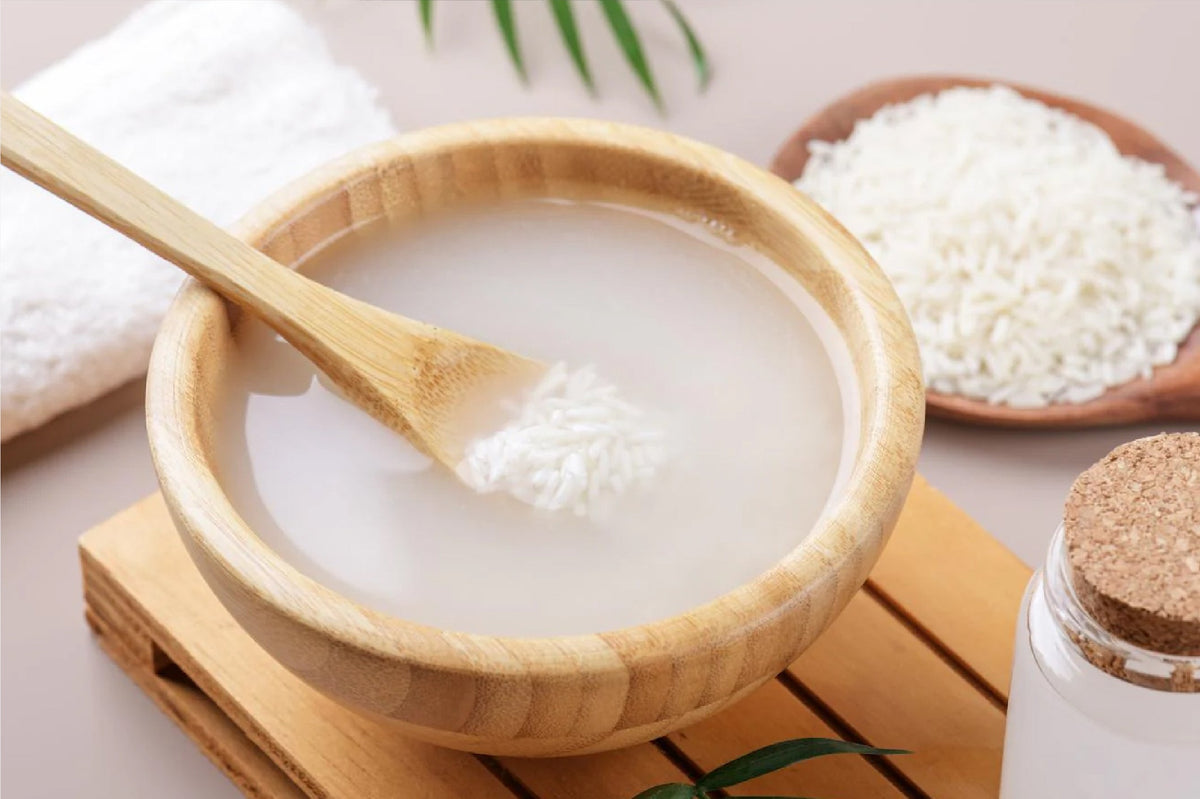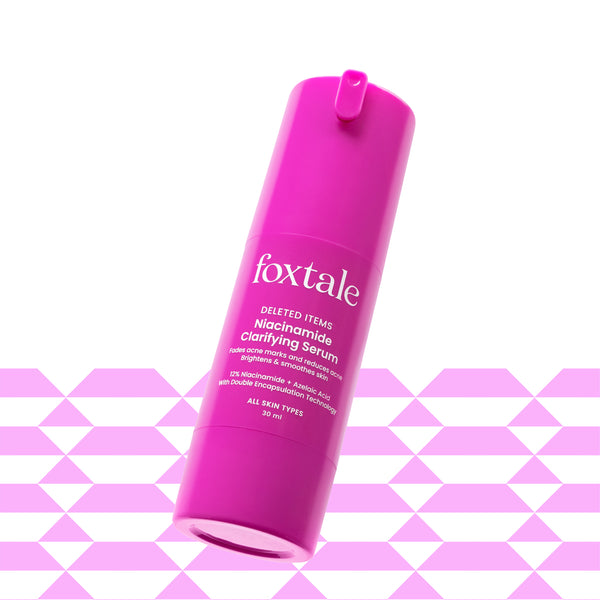
Niacinamide and rice water are two ingredients that help simplify your skincare routine. Subtext: better efficacy, fewer steps, and zero flare-ups.. This duo of ingredients has been around for a while, and they’re still used — not because of hype, but because they quietly improve the skin.
Let’s walk through why people use them, how they work together, and how to keep your routine simple.
What is Rice Water?
You’ve probably heard of it. Rice water is just what’s left after rinsing or soaking rice. It’s nothing fancy, but it has been a part of beauty routines in places like Japan, Korea, and China for centuries.
Women in Japan’s Heian period used fermented rice water to take care of their hair and skin. Not much has changed — it still does the job.
Benefits of Rice Water for Skin
1. It’s Mild and Contains Important Nutrients
Rice water isn’t going to change your skin overnight. But it has nutrients — Amino Acids, B Vitamins, a bit of Ferulic Acid — that help hydrate and brighten.
People use it because it doesn’t sting. No peeling, no reaction, just slow improvement. For sensitive skin, that matters.
2. It Works Like a Toner
After washing your face, using rice water can help balance things out. It also adds a layer of moisture without leaving anything greasy behind.
If you let it sit out for a day or two, it ferments. That adds a light exfoliating effect. Not a full peel — just enough to smooth things over time.
What is Niacinamide?
Niacinamide is present everywhere in the skincare world. Acne products, anti-aging serums, moisturizers — it’s one of the few that fits into most routines without problems.
It’s a form of Vitamin B3, and it helps with oil, tone, texture, and barrier repair.
The Benefits of Niacinamide for Skin
1. Less Oil, Fewer Breakouts
It can help reduce how much oil your skin produces, which is useful if your skin clogs easily or gets shiny by midday.
Also, it calms things down. So if your skin flares up after breakouts or stays red for too long, niacinamide helps take the edge off.
2. Smoother Tone, Less Discoloration
Over time, it can help fade dark marks. It slows down pigment transfer in the skin, which helps even things out.
You won’t see a big difference overnight, but give it a few weeks, and spots usually fade a bit.
3. Barrier Support
If your skin feels tight or gets flaky easily, your barrier might be damaged. Niacinamide helps your skin rebuild its natural barrier by boosting Ceramides and Collagen.
That means better moisture retention — and less chance of irritation later.
Combining Rice Water and Niacinamide for Optimal Skincare
Rice Water and Niacinamide do the same thing, but they don’t clash either. Rice water helps calm and hydrate. Niacinamide gets to work on deeper concerns — oil balance, tone, texture.
Used back-to-back, they cover more ground than either would alone.
Also, rice water can make Niacinamide easier to tolerate for people with sensitive skin.
How to Use Rice Water and Niacinamide for Skin
How to Make Rice Water for Skin
Here’s a quick version:
-
Rinse half a cup of rice to get the starch off.
-
Add about two cups of clean water.
-
Let it sit for 30 minutes, stir it a bit, then strain the water into a clean container.
-
Store in the fridge, and use within four days.
Use it with a cotton pad or just pat it on with your hands after cleansing.
Niacinamide Serum with Rice Water for Everyday Use
Once your skin feels dry, apply a small amount of Niacinamide Serum. Two or three drops are enough.
If you’re new to it, stick to 5% or under. No need to jump straight into high-strength formulas.
Finish with your usual moisturizer.
Incorporating into Your Daily Skincare Routine
You can do this in the morning, at night, or both — up to you.
1. Morning: Don’t skip sunscreen at any cost. Niacinamide helps with tone, but sun exposure might negate your progress.
2. Night: Add a richer moisturizer if your skin gets dry overnight.
If you're using acids or retinol, rotate those in on separate nights. Don't layer everything at once, as it leads to inflammation or flare-ups/
Safety Check
Niacinamide and Rice Water are usually well-tolerated by all. Still, test first — especially if you’re DIY-ing rice water. If it smells weird, toss it.
Niacinamide is stable, but some people react to higher percentages. If you get redness or a burning feeling, switch to a lower dose or take a break.
What to Expect
This isn’t a quick fix, and it’s not meant to be. You’ll start to notice small improvements after a couple weeks — maybe smoother texture, fewer breakouts, less redness.
Stick with it, and your skin will likely get more even, more hydrated, and less reactive over time.
The Bottom Line
Rice water and Niacinamide aren’t just buzzy ingredients , they actually deliver results. Together, they create a simple, low-risk routine that suits most skin types — especially if you’re aiming for a calmer, more even complexion.
No magic. No overpromises. Just a straightforward routine that’s easy to stick with.
FAQs
Does rice water brighten skin?
It can help, especially if your skin’s looking dull or dehydrated. It won’t bleach spots, but it makes the surface look more balanced.
Can I use Niacinamide with dry skin?
Yes. It helps repair the barrier and hold onto moisture. Just make sure to follow up with a moisturizer that works for you.
How long until I see results?
Expect to wait at least 2–4 weeks for visible changes. That’s normal. Give it time.




